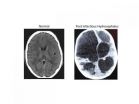(Press-News.org) However, Francis Chaouloff, research director at Inserm's NeuroCentre Magendie (Inserm Joint Research Unit 862, Université Bordeaux Ségalen), Sarah Dubreucq, a PhD student and François Georges, a CNRS research leader at the Interdisciplinary Institute for Neuroscience (CNRS/Université Bordeaux Ségalen) have just discovered the key role played by a protein, the CB1 cannabinoid receptor, during physical exercise. In their mouse studies, the researchers demonstrated that the location of this receptor in a part of the brain associated with motivation and reward systems controls the time for which an individual will carry out voluntary physical exercise. These results were published in the journal Biological Psychiatry.
The collective appraisal conducted by Inserm in 2008 highlighted the many preventive health benefits of regular physical activity. Such activity is limited, however, by our lifestyle in today's industrial society. While varying degrees of physical inactivity may be partly explained by social causes, they are also rooted in biology.
"The inability to experience pleasure during physical activity, which is often quoted as one explanation why people partially or completely drop out of physical exercise programmes, is a clear sign that the biology of the nervous system is involved", explains Francis Chaouloff.
But how exactly? The neurobiological mechanisms underlying physical inactivity had yet to be identified.
Francis Chaouloff (Giovanni Marsicano's team at the NeuroCentre Magendie; Inserm joint research unit, Université Bordeaux Ségalen) and his team have now begun to decipher these mechanisms. Their work clearly identifies the endogenous cannabinoid (or endocannabinoid) system as playing a decisive role, in particular one of its brain receptors. This is by no means the first time that data has pointed to interactions between the endocannabinoid system, which is the target of delta9-tetrahydrocannabinol (the active ingredient of cannabis), and physical exercise. It was discovered ten years ago that physical exercise activated the endocannabinoid system in trained sportsmen, but its exact role remained a mystery for many years. Three years ago, the same research team in Bordeaux observed that when given the opportunity to use a running wheel, mutant mice lacking the CB1 cannabinoid receptor, which is the principal receptor of the endocannabinoid system in the brain, ran for a shorter time and over shorter distances than healthy mice. The research published in Biological Psychiatry this month seeks to understand how, where and why the lack of CB1 receptor reduces voluntary exercise performance (by 20 to 30%) in mice allowed access to a running wheel three hours per day.
The researchers used various lines of mutant mice for the CB1 receptor, together with pharmacological tools. They began by demonstrating that the CB1 receptor controlling running performance is located at the GABAergic nerve endings. They went on to show that the receptor is located in the ventral tegmental area of the brain (see diagram below), which is an area involved in motivational processes relating to reward, whether the reward is natural (food, sex) or associated with the consumption of psychoactive substances.
Based on the results of this study and earlier work, the Bordeaux team suggests the following neurobiological explanation: at the beginning and for the duration of physical exercise, the CB1 receptor is constantly simulated by the endocannabinoids, lipid molecules that naturally activate this receptor in response to pleasant stimuli (rewards) and unpleasant stimuli (stress). Endocannabinoid stimulation of the CB1 receptor during physical exercise inhibits the release of GABA, an inhibitory neurotransmitter that controls the activity of the dopamine neurons associated with the motivation and reward processes. This stimulation of the CB1 receptor "inhibits inhibition", in other words, it activates the dopaminergic neurons in the ventral tegmental area. The CB1 receptor must therefore be stimulated before the exercise can go on for longer and the body must receive the necessary motivation.
Conversely, without these CB1 receptors, the "GABAergic brake" continues to act on the dopaminergic neurons in the ventral tegmental area, leading to the reduced performance levels observed above.
It is already known that CB1 receptors play a regulatory role in the motivation to consume rewards, whether natural or not. What is original about this research is that it shows that physical exercise can be added to the array of natural rewards regulated by the endocannabinoid system. "If confirmed, this motivational hypothesis would imply that the role played by the CB1 receptor has more to do with 'staying power' in the exercise than with actual physical performance levels" explain the researchers.
This work reveals that the endocannabinoid system plays a major role in physical exercise performance through its impact on motivational processes. It thus opens up new avenues of research into the mediators of pleasure – and even addiction – associated with regular physical exercise. "After endorphins, we now need to consider endocannabinoids as another potential mediator of the positive effects that physical exercise has on our mood," the researchers conclude.
For further information
Source
"Ventral Tegmental Area Cannabinoid Type-1 Receptors Control Voluntary Exercise Performance"
Sarah Dubreucqa,c, Audrey Duranda,c, Isabelle Matiasa,c, Giovanni Bénarda,c, Elodie Richarda,c, Edgar Soria-Gomeza,c, Christelle Glangetasb,c, Laurent Grocb,c, Aya Wadleigha,c, Federico Massaa,c, Dusan Bartschd, Giovanni Marsicanoa,c,e, Francois Georgesb,c & Francis Chaouloffa,c
a Unité Inserm 862, NeuroCentre Magendie, Physiopathologie de la Plasticité Neuronale, Bordeaux, F-33076, France
b CNRS UMR 5297, Institut Interdisciplinaire de NeuroSciences, Bordeaux, F-33076, France
c Université Bordeaux Segalen, Bordeaux, F-33076, France
d Department of Molecular Biology, Central Institute of Mental Health, 68159 Mannheim, Germany
Biological Psychiatry, 12 December 2012
Francis Chaouloff
Email: francis.chaouloff@inserm.fr
### END
This press release is available in Spanish.
Vegetated drainage ditches can help capture pesticide and nutrient loads in field runoff, U.S. Department of Agriculture (USDA) scientists report. These ditches—as common in the country as the fields they drain—give farmers a low-cost alternative for managing agricultural pollutants and protecting natural resources.
Agricultural Research Service (ARS) ecologist Matt Moore at the agency's National Sedimentation Laboratory in Oxford, Miss., and his colleagues conducted the research. ARS is USDA's chief intramural scientific ...
This press release is available in German.
What is normal to most people in winter has so far been impossible in physics: a minus temperature. On the Celsius scale minus temperatures are only surprising in summer. On the absolute temperature scale, which is used by physicists and is also called the Kelvin scale, it is not possible to go below zero – at least not in the sense of getting colder than zero kelvin. According to the physical meaning of temperature, the temperature of a gas is determined by the chaotic movement of its particles – the colder the gas, the slower ...
New research from Western University provides brain imaging evidence that students well-versed in very basic single digit arithmetic (5+2=7 or 7-3=4) are better equipped to score higher on the Preliminary Scholastic Aptitude Test (PSAT), an examination sat by millions of students in the United States each year in preparation for college admission tests.
In findings published today in The Journal of Neuroscience research led by Daniel Ansari, Associate Professor in Western's Department of Psychology and a principal investigator at the Brain and Mind Institute, showed by ...
The U.S. Defense Advanced Research Projects Agency (DARPA) recently selected Southwest Research Institute to provide the flight low-rate crosslink wireless communications platform for the System F6 Program.
The System F6 Program, which is envisioned to culminate in an on-orbit demonstration in 2015–2016, is designed to validate a new space mission concept in which a cluster of smaller, wirelessly connected spacecraft replaces the typical single spacecraft carrying numerous instruments and payloads. This "fractionated" architecture enhances survivability, responsiveness ...
BOSTON – Genomic research is widely expected to transform medicine, but progress has been slower than expected. While critics argue that the genomics "promise" has been broken – and that money might be better spent elsewhere -- proponents say the deliberate pace underscores the complexity of the relationship between medicine and disease and, indeed, argues for more funding.
But thus far, these competing narratives have been based mostly on anecdotes. Ramy Arnaout, MD, DPhil, a founding member of the Genomic Medicine Initiative at Beth Israel Deaconess Medical Center (BIDMC), ...
UNIVERSITY PARK, Pa. -- The amount of rainfall affects the number of infant infections leading to hydrocephalus in Uganda, according to a team of researchers who are the first to demonstrate that these brain infections are linked to climate.
Hydrocephalus -- literally "water on the brain" -- is characterized by the build-up of the fluid that is normally within and surrounding the brain, leading to brain swelling. The swelling will cause brain damage or death if not treated. Even if treated, there is only a one-third chance of a child maintaining a normal life after post-infectious ...
UNIVERSITY PARK, Pa. -- Norfolk Southern Railway No. 999 is the first all-electric, battery-powered locomotive in the United States. But when one of the thousand lead-acid batteries that power it dies, the locomotive shuts down. To combat this problem, a team of Penn State researchers is developing more cost-effective ways to prolong battery life.
The experimental locomotive's batteries, just like automotive batteries, are rechargeable until they eventually die. A leading cause of damage and death in lead-acid batteries is sulfation, a degradation of the battery caused ...
UNIVERSITY PARK, Pa. -- Experience working for a particular hospital matters when it comes to the performance of radiologists who work for outsourcing teleradiology companies, according to a team of researchers, whose finding could have important implications, given the growing use of telemedicine.
"More than half of all hospitals now use teleradiology services," said Jonathan Clark, assistant professor of health policy and administration, Penn State. "Hospitals send their X-rays, CT scans, MRIs and other images to outsourcing companies who then forward the images to ...
SAN DIEGO – Genetic sequencing technology is altering the way cancer is diagnosed and treated, but traditional specimen handling methods threaten to slow that progress.
That's the message delivered this week in a column appearing in the Journal of the American Medical Association (JAMA) by Scripps Clinic physicians Eric Topol, Kelly Bethel and Laura Goetz.
Dr. Topol is a cardiologist who serves as chief academic officer of Scripps Health and director of the Scripps Translational Science Institute (STSI), leading Scripps' genomic medicine research efforts. Dr. Bethel ...
CAMBRIDGE, MA -- Many industrial plants depend on water vapor condensing on metal plates: In power plants, the resulting water is then returned to a boiler to be vaporized again; in desalination plants, it yields a supply of clean water. The efficiency of such plants depends crucially on how easily droplets of water can form on these metal plates, or condensers, and how easily they fall away, leaving room for more droplets to form.
The key to improving the efficiency of such plants is to increase the condensers' heat-transfer coefficient — a measure of how readily heat ...


